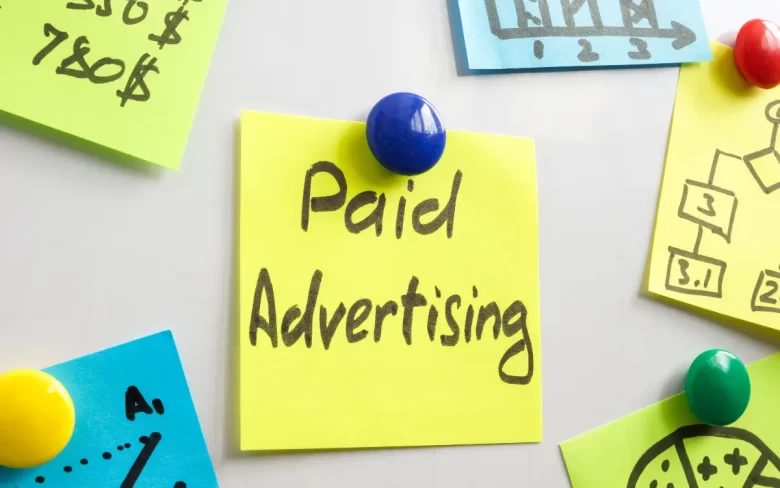Investing in paid traffic might seem challenging for small businesses. However, with the right strategies, it’s possible to achieve excellent results without breaking the bank. In this article, we’ll explore practical tips to leverage paid traffic for small businesses, helping you maximize your investment and boost sales.
What Is Paid Traffic?
Paid traffic refers to visitors who land on your website through paid advertisements. These ads can appear on social media platforms, search engines, or other online channels. The primary benefit of paid traffic is its ability to deliver fast results, attracting new customers and increasing brand visibility.
Benefits of Paid Traffic for Small Businesses
For small businesses, paid traffic offers several advantages:
- Budget control: You set how much you want to spend daily or per campaign.
- Quick results: Unlike organic traffic, paid traffic can generate clicks and conversions almost immediately.
- Precise targeting: Ads can be directed to specific audiences, increasing the likelihood of conversions.
How to Create a Low-Budget Paid Traffic Campaign
1. Set a Realistic Budget
The first step in any paid traffic campaign is deciding how much you’re willing to invest. Even with a limited budget, you can achieve results by allocating funds wisely. Start with an amount you can test without straining your finances.
2. Choose the Right Platform
Not all platforms suit every business. Here are some popular options:
- Google Ads: Ideal for appearing in search results.
- Facebook Ads: Excellent for targeting audiences based on interests.
- Instagram Ads: Works well for visually appealing businesses.
Select the platform where your target audience is most active and allocate your budget accordingly.
3. Create Conversion-Focused Ads
A common mistake small businesses make is creating ads without a clear focus. Your ads should be straightforward, with clear calls to action like “Buy Now” or “Learn More.” Use eye-catching visuals and concise text to encourage conversions.
4. Use Smart Targeting
Targeting is one of the biggest strengths of paid traffic. Define your audience based on:
- Location
- Age group
- Interests and behaviors
This ensures your ads reach people genuinely interested in your product, minimizing wasted resources.
5. Optimize for Mobile
Many users browse the internet on mobile devices. Ensure your ads and landing pages are mobile-friendly. Poorly formatted ads can drive potential customers away.
6. Track Results and Make Adjustments
Monitoring your paid traffic campaigns is essential. Check metrics like:
- Click-through rate (CTR)
- Cost per click (CPC)
- Conversion rate
If an ad isn’t performing well, adjust the text, image, or targeting.
Paid Traffic Platforms for Small Businesses
Google Ads
Google Ads is one of the most powerful tools for small businesses aiming to increase visibility. It allows you to create ads that appear at the top of Google’s search results. The key to success with Google Ads is selecting the right keywords. Invest in terms your audience would use to find your products or services.
Facebook Ads
If your business relies on building close relationships with customers, Facebook Ads is ideal. This platform offers detailed targeting options based on interests, behaviors, and demographics. Additionally, the cost per click tends to be lower compared to other platforms.
Instagram Ads
For businesses with visually appealing products or services, Instagram Ads is an excellent choice. Attention-grabbing images and videos can generate significant engagement, increasing conversion chances.
LinkedIn Ads
If your business sells to other businesses (B2B), LinkedIn Ads can be a great alternative. This platform allows you to target users based on their profession, company, or seniority level, making it ideal for reaching decision-makers.
Tips for Optimizing Your Paid Traffic Budget
- Start Small and Test: Don’t spend your entire budget at once. Begin with a small amount and evaluate the ad’s performance. Based on results, gradually increase the investment.
- Take Advantage of Credit Offers: Many platforms, such as Google Ads and Facebook Ads, offer free credits for new advertisers. Use these opportunities to test ads without spending your own money.
- Focus on Long-Tail Keywords: On Google Ads, long-tail keywords (specific and longer search terms) typically have less competition and cost less. These keywords often bring highly qualified traffic, increasing conversion chances.
Measuring the Success of Paid Traffic Campaigns
Tracking the success of your paid traffic campaigns is essential to ensure your investment is worthwhile. Here are some key performance indicators (KPIs) to monitor:
- Click-through rate (CTR): Indicates how many people clicked on your ad.
- Cost per click (CPC): Shows how much you’re paying per click.
- Conversion rate: Reveals how many clicks resulted in a desired action, like a purchase or sign-up.
With these insights, you can adjust your campaigns and ensure you’re getting the best return on investment.
Conclusion
Investing in paid traffic for small businesses can be an efficient way to boost visibility and sales, even with a limited budget. The key lies in choosing the right platform, targeting your audience effectively, and closely monitoring results. With the tips outlined in this article, you’ll be better equipped to run successful campaigns.
FAQ
1. What is the best paid traffic platform for small businesses?
The choice depends on your target audience. Google Ads is ideal for search, while Facebook and Instagram Ads are great for visual engagement.
2. How much should I invest in paid traffic?
Start with a small amount, such as $10–$20 per day, and adjust based on results.
3. How can I target my audience?
You can target based on age, location, interests, behavior, and more, depending on the platform you’re using.
4. Is it possible to get good results with a low budget?
Yes, with the right strategies and proper targeting, you can maximize results even on a small budget.
5. How can I measure the success of my campaign?
Track metrics such as CTR, CPC, and conversion rate.
6. Should I use more than one advertising platform?
If possible, yes. Diversifying your campaigns across platforms can increase your chances of success.
7. Are paid ads better than organic traffic?
Both are important. Paid traffic delivers faster results, while organic traffic is more sustainable in the long term.




